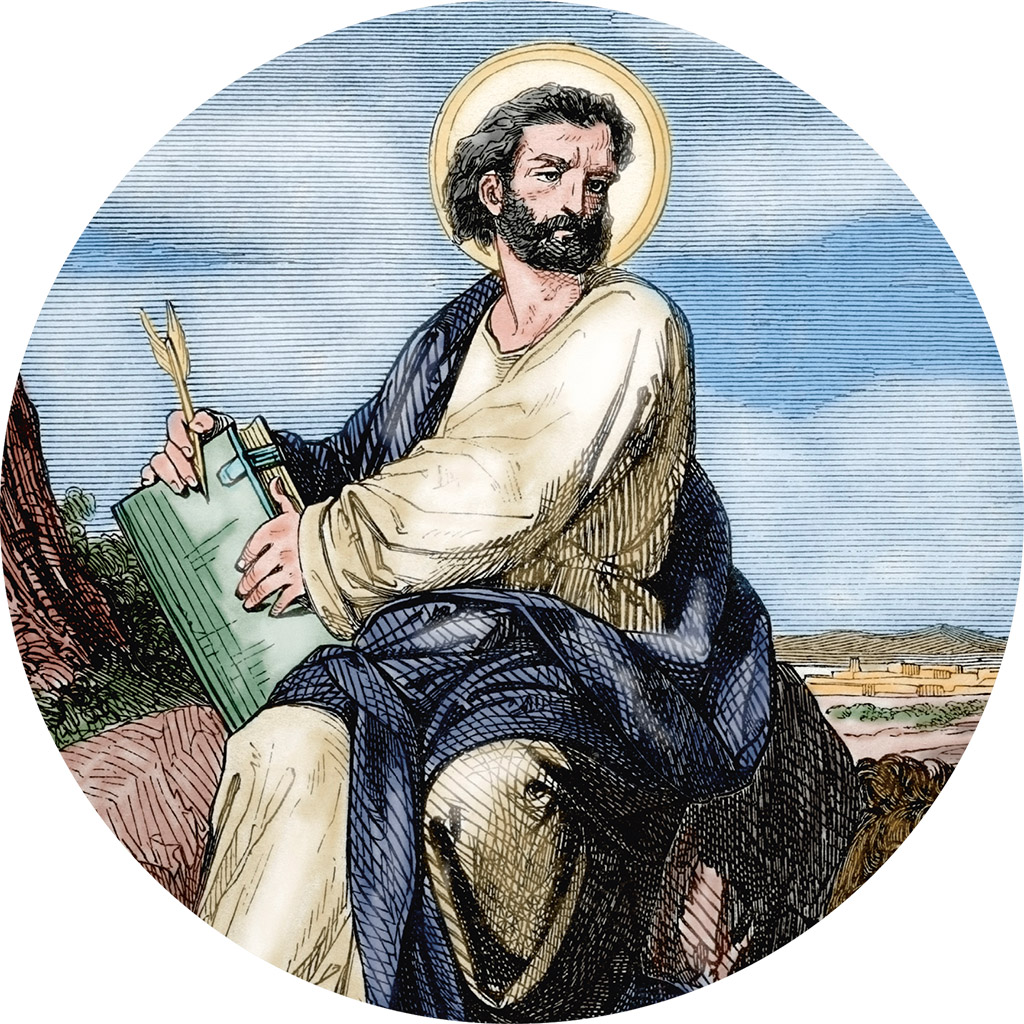
t Ornate coloured marble panels on the exterior of the Basilica
E3 ⌂ Piazza San Marco 4 San Marco # 9:45am–5pm Mon–Sat, 2–4pm Sun ∑ basilicasanmarco.it
Dark, mysterious and enriched with the spoils of conquest, Venice’s famous Basilica blends the architectural and decorative styles of East and West to create one of Europe’s greatest buildings. Inside, this Byzantine extravaganza is embellished with golden mosaics, icons and ornate marble carvings.
Built on a Greek cross plan and crowned with
fi ve huge domes, St Marks owes its almost Oriental splendour to countless treasures from the Republic’s overseas empire. Among these are copies of the famous bronze horses brought from Constantinople in 1204, and a wealth of columns, bas-reliefs and coloured marbles studded across the main façade. Mosaics from different epochs adorn the five doorways, while the main portal is framed by some of Italy’s loveliest Romanesque carving (1240–65). Initially built in the 9th century, this is the third church to stand on the site.
St Mark’s magnificent interior is clad with dazzling mosaics, which begin in the narthex, or atrium, of the Basilica, and culminate in the glittering panels of the Pentecost and Ascension domes. The Genesis Cupola in the atrium has a stunning scene of the Creation of the World described in concentric circles. The pavimento, or floor, is also patterned with mosaics in marble and glass. Steps from the atrium lead to the Museo Marciano, home to the Basilica’s famous horses. Other treasures include the jewel-encrusted Pala d’Oro, the Nicopeia icon and the precious hoards of silver, gold and glassware in the Treasury.
The earliest of the Basilica’s gleaming mosaics date from the 12th century, and were the work of mosaicists from the East. Their delicate techniques were soon adopted by Venetian craftsmen, who gradually took over the Basilica’s decoration, combining Byzantine inspiration with Western influences. During the 16th century, many sketches by Tintoretto, Titian, Veronese and other leading artists were reproduced in mosaic.
Look out for signposts to the “Loggia dei Cavalli”, which lead you up to the museum. Here, the gallery offers a splendid view into the Basilica. The star exhibits are gilded bronze horses, stolen from the top of Constantinople’s Hippodrome (ancient racecourse) in 1204.

t Ornate coloured marble panels on the exterior of the Basilica
Experience Venice

n Double-tap image to read the labels
Experience Venice
Timeline |

828–978A church is built to house relics of St Mark, stolen from Alexandria. It burns down in 976 and is rebuilt in 978 |

978–1117The church is replaced by a grand basilica, “the House of St Mark”, reflecting Venice’s growing power |

1117–c.13004,240 sq m (45,622 sq ft) of gleaming golden mosaics are added to the domes, walls and floors of the Basilica |

1807The doge’s private chapel until 1807, San Marco succeeds San Pietro di Castello as the cathedral of Venice |
Experience Venice

Beyond the Cappella di San Clemente lies the entrance to San Marco's most valuable treasure: the Pala d’Oro. This bejewelled altarpiece consists of 250 enamel paintings on gold, enclosed within a gilded silver frame. Napoleon stole some of the precious stones in 1797, but the screen still gleams with rubies, pearls and sapphires.